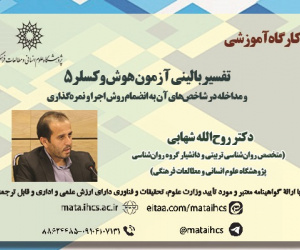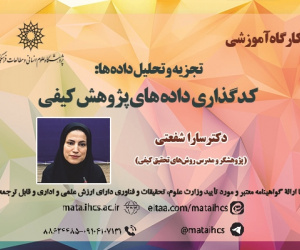تحلیل جامعه شناختی رابطه بین اعتیاد به شبکه های اجتماعی تلفن همراه با هویت جنسیتی (دانشجویان دختر دانشگاه پیام نور ساری) (مقاله علمی وزارت علوم)
درجه علمی: نشریه علمی (وزارت علوم)
آرشیو
چکیده
هدف تحقیق حاضر مطالعه جامعه شناختی رابطه بین اعتیاد به شبکه های اجتماعی تلفن همراه با هویت جنسیتی (دانشجویان دختر دانشگاه پیام نور ساری) در سال 1402 است. پژوهش حاضر از لحاظ هدف، از نوع کاربردی، از لحاظ نوع روش، توصیفی و همبستگی می باشد و از لحاظ روش گردآوری اطلاعات، میدانی است. جامعه آماری این پژوهش شامل کلیه دانشجویان دختر دانشگاه پیام نور ساری با تعداد 2450 نفر است. حجم نمونه با استفاده از فرمول کوکران 395 نفر برآورد گردید و با استفاده از روش نمونه گیری تصادفی سیستماتیک انتخاب شدند. به منظورگردآوری داده های مورد نیاز، از پرسش نامه استاندارد هویت جنسیتی مک براید و همکاران (2008) و پرسش نامه محقق ساخته اعتیاد به شبکه های اجتماعی استفاده شده است. داده ها با نرم افزار SPSS تحلیل شد و برای تحلیل فرضیات از ضریب همبستگی پیرسون، رگرسیون چندمتغیره و تحلیل مسیر استفاده شد. نتایج تحقیق نشان می دهد که در آزمون پیرسون بین تحقیق پنج گانه مؤلفه های متغیر مستقل (اعتیاد به شبکه های اجتماعی) دو مؤلفه میزان اعتقاد به شبکه های اجتماعی و میزان مشارکت با دیگران در شبکه های اجتماعی رابطه مستقیم در سطح ضعیفی را با متغیر وابسته تحقیق نشان داده اند؛ ولی سه مؤلفه دیگر متغیر مستقل (میزان استفاده از شبکه های اجتماعی، میزان دلبستگی به شبکه های اجتماعی و میزان رضایت از شبکه های اجتماعی) رابطه متوسط و مستقیمی را با متغیر وابسته تحقیق داشته اند. نهایتاً 4 مؤلفه میزان استفاده از شبکه های اجتماعی، میزان دلبستگی به شبکه های اجتماعی، میزان اعتقاد به شبکه های اجتماعی و میزان مشارکت با دیگران در شبکه های اجتماعی توانستند 33 درصد از واریانس متغیر وابسته تحقیق را تبیین نمایند.Sociological Analysis of the Relationship between Addiction to Mobile Social Networks and Gender Identity (Case Study: Female Students of Payam Noor University in Sari)
The purpose of this research is to explore the sociological relationship between addiction to mobile social networks and gender identity among female students of Payam Noor University, Sari in 2023. This is an applied study that adopts a descriptive and correlational method. Data collection is conducted using a field survey. The statistical population includes all female students of Payam Noor University in Sari (n=2450). A sample size of 395 people was determined by systematic random sampling using Cochran's formula. The required data was collected using the standard gender identity questionnaire developed by McBride et al. (2008) and the researcher-made questionnaire of addiction to social networks. Data analysis was conducted with SPSS software and Pearson's correlation coefficient, multivariate regression, and path analysis were used to analyze the hypotheses. The results of the Pearson test suggest that five components of the independent variable (addiction to social networks), the two components of belief in social networks and the degree of participation in others in social networks are weakly and directly related to the dependent variable. However, the other three components of the independent variable (the extent of using social networks, the strength of attachment to social networks and satisfaction with social networks) are moderately and directly connected to the dependent variable. Finally, 4 components of the extent of using social networks, the strength of attachment to social networks, belief in social networks and the degree of participation in others in social networks were able to explain 33% of the variance in the dependent variable.







